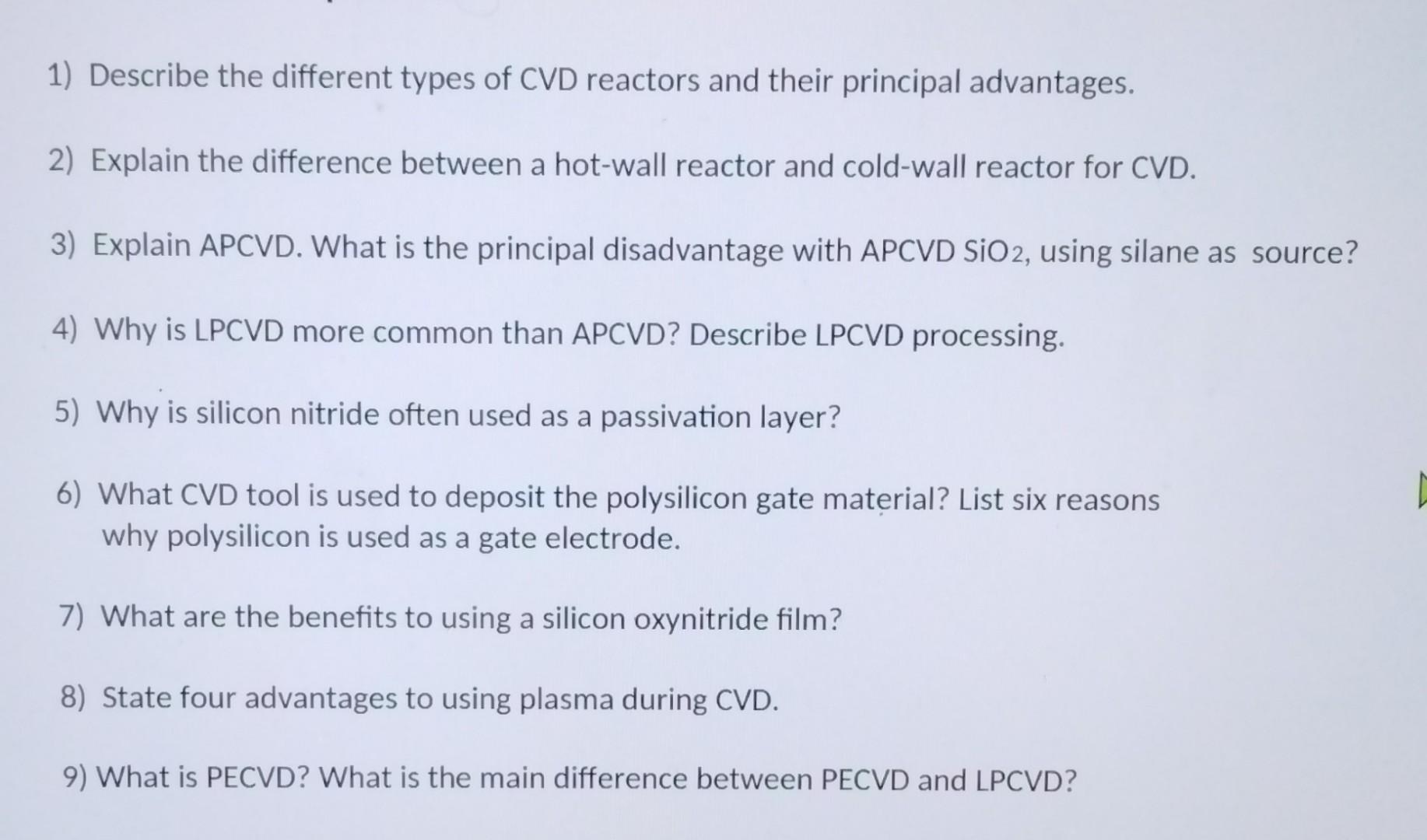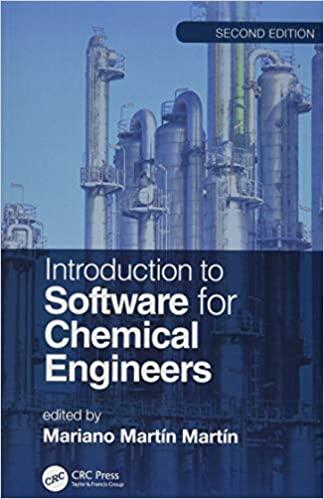Answered step by step
Verified Expert Solution
Question
1 Approved Answer
1) Describe the different types of CVD reactors and their principal advantages. 2) Explain the difference between a hot-wall reactor and cold-wall reactor for CVD.

1) Describe the different types of CVD reactors and their principal advantages. 2) Explain the difference between a hot-wall reactor and cold-wall reactor for CVD. 3) Explain APCVD. What is the principal disadvantage with APCVD SiO2, using silane as source? 4) Why is LPCVD more common than APCVD? Describe LPCVD processing. 5) Why is silicon nitride often used as a passivation layer? 6) What CVD tool is used to deposit the polysilicon gate material? List six reasons why polysilicon is used as a gate electrode. 7) What are the benefits to using a silicon oxynitride film? 8) State four advantages to using plasma during CVD. 9) What is PECVD? What is the main difference between PECVD and LPCVD? 1) Describe the different types of CVD reactors and their principal advantages. 2) Explain the difference between a hot-wall reactor and cold-wall reactor for CVD. 3) Explain APCVD. What is the principal disadvantage with APCVD SiO2, using silane as source? 4) Why is LPCVD more common than APCVD? Describe LPCVD processing. 5) Why is silicon nitride often used as a passivation layer? 6) What CVD tool is used to deposit the polysilicon gate material? List six reasons why polysilicon is used as a gate electrode. 7) What are the benefits to using a silicon oxynitride film? 8) State four advantages to using plasma during CVD. 9) What is PECVD? What is the main difference between PECVD and LPCVD
Step by Step Solution
There are 3 Steps involved in it
Step: 1

Get Instant Access to Expert-Tailored Solutions
See step-by-step solutions with expert insights and AI powered tools for academic success
Step: 2

Step: 3

Ace Your Homework with AI
Get the answers you need in no time with our AI-driven, step-by-step assistance
Get Started


